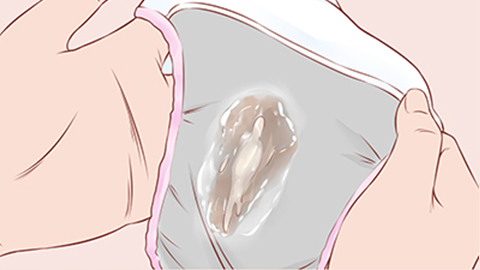What causes yellow vaginal discharge?
In general, yellow vaginal discharge may be caused by lifestyle and dietary habits, special physiological periods, bacterial vaginitis, trichomonas vaginitis, cervicitis, and other factors. Prompt medical consultation is required, and treatment should be administered according to medical advice. Details are as follows:

1. Lifestyle and Diet: Lifestyle and dietary habits can influence the color of vaginal discharge to some extent. For example, insufficient water intake may lead to concentrated urine, which can cause the vaginal discharge to appear yellowish; excessive consumption of spicy foods or alcohol may affect hormone levels in the body, leading to yellow vaginal discharge. It is important to maintain adequate hydration, avoid excessive intake of spicy foods and alcohol, change underwear regularly, and keep the genital area clean and dry.
2. Special Physiological Periods: During the luteal phase after ovulation, increased progesterone secretion leads to decreased vaginal discharge that appears cloudy and may have a slightly yellowish appearance under natural light. These are normal physiological phenomena. No special treatment is required; maintaining cleanliness and dryness of the genital area is sufficient. If concerns persist, a gynecological examination can be performed to rule out other pathological factors.
3. Bacterial Vaginitis: Poor personal hygiene, multiple sexual partners, frequent sexual intercourse, and other factors can lead to imbalance in vaginal pH, allowing overgrowth of pathogens such as anaerobic bacteria and mycoplasma, causing vaginitis. Inflammation causes congestion of the vaginal mucosa, increased discharge that appears pale yellow, and may be accompanied by a fishy odor. Treatment should follow medical advice using antibacterial and anti-inflammatory medications such as Tinidazole tablets, Metronidazole suppositories, and Clindamycin hydrochloride capsules.
4. Trichomonas Vaginitis: Infection of the vagina by Trichomonas vaginalis causes trichomonas vaginitis. Trichomonads multiply in the vagina, damaging the mucosal lining, resulting in increased discharge that is yellowish-white or gray-yellow in color, frothy, with a foul odor, and may also be accompanied by itching of the external genitalia. Treatment should follow medical guidance using antifungal medications such as Clotrimazole tablets, Fluconazole capsules, and Ornidazole vaginal suppositories.
5. Cervicitis: Cervicitis is usually caused by pathogenic bacteria invading cervical tissue, leading to congestion, edema, erosion, or ulcers of the cervical mucosa. Inflammation causes increased cervical secretions, which appear gray or light yellow, purulent, with or without an odor, and may also be accompanied by pain during sexual intercourse. Medications such as Amoxicillin capsules, Gongyanping tablets, and Azithromycin capsules should be used according to medical advice to achieve anti-inflammatory effects.
Personal hygiene should be maintained in daily life, keeping the genital area clean and dry. Sexual activity should be avoided during treatment to prevent cross-infection.
References:
1. Xie Xing, Kong Beihua, Duan Tao. Obstetrics and Gynecology [M]. 9th edition. Beijing: People's Medical Publishing House, 2018: 249-254.
2. Feng Youji, Shen Keng. Obstetrics and Gynecology [M]. 3rd edition. Beijing: People's Medical Publishing House, 2015: 300-306.





